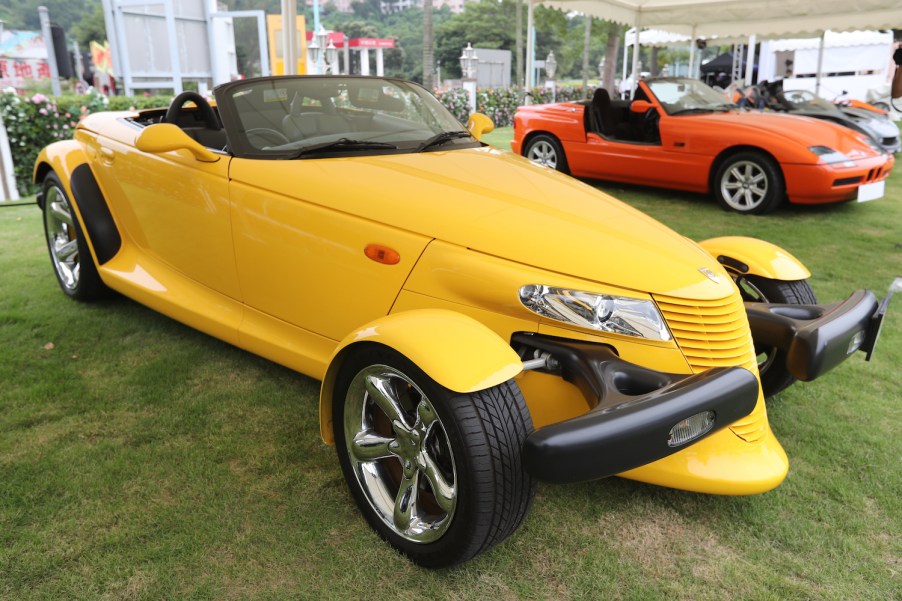
Can We Save The Plymouth Prowler?
The Plymouth Prowler wasn’t exactly well-received. It was just one example of Chrysler’s attempt at bringing retro cars to the market. The Ford Thunderbird’s final generation took a similar approach. While the Prowler may not have been as bad as perceived, it had some inherent flaws and perhaps didn’t bridge the gap between modern cars and hot rods. Thankfully, enthusiasts have found ways to improve the Prowler and elevate it to the proper status.
What was wrong with the Prowler?

The Prowler was a front-engine roadster with rear-wheel drive that Chrysler made from 1997-2002. It featured retro styling, such as a pointed front end with wheels set apart from the bodywork, like an open-wheel racer. So far so good, but unfortunately the drivetrain is where it might garner some disdain. In its later years, it used a 3.5-liter V6 mated to an automatic transaxle mounted to the rear of the car, mimicking the C5 Corvette and Porsche 944. Although it’s good for weight distribution, working on this layout can be challenging.
What was right with the Prowler?

The Plymouth Prowler weighed just 2,800 pounds thanks to its aluminum body, which is amazing. Its layout of front-engine with a rear-mounted transaxle meant it had more even weight on both ends of the car. The horsepower was nothing to sneeze at either. In 1999 its power output was increased from 214 to 253 thanks to its bigger aluminum-block 3.5-liter engine.
The Prowler’s suspension was particularly eye-catching. It used upper and lower control arms, actuated by pushrods. F1 and Indycars use this type of suspension, as it helps eliminate body roll through corners. It allowed the Prowler to be quick and responsive on track. By rights the Prowler had a great platform, it just needed some hot-rodding.
How to fix the Plymouth Prowler

The engine’s 253 horsepower is fine for a car that weighs so little, but if you were so inclined to swap something else, it’s entirely possible. Owners have showcased their custom Prowlers with Hellcat V8 and LS7 swaps. That sort of power increase would require increasing the tire size, and the Hellcat especially requires lots of fabrication work. If power were the only concern, turbocharging kits and ECU tunes exist for the Prowler’s existing 3.5-liter.
The real concern with the Prowler is its lack of a manual transmission, which has also been solved. Thankfully, as with the Porsche 944 and Corvette drivetrains, the Prowler isn’t unique with its rear transaxle. One particular Prowler owner used an LS7 mated to a five-speed Porsche G50 transaxle, according to The Drive. This transaxle was used in the Porsche 911 Carrera from 1987-1989 and had a limited-slip differential.
Is fixing the Prowler worth the money and time?

The Prowler is lightweight with pushrod suspension, so on paper, it could be worth fixing, as long as there’s a good deal on an engine and transaxle. Since its demise, the car has garnered cult status and is selling for $30,000, which is a lot for an old car. However, the Prowlers on sale have very low miles. It would be a passion project, with a fantastic outcome.


